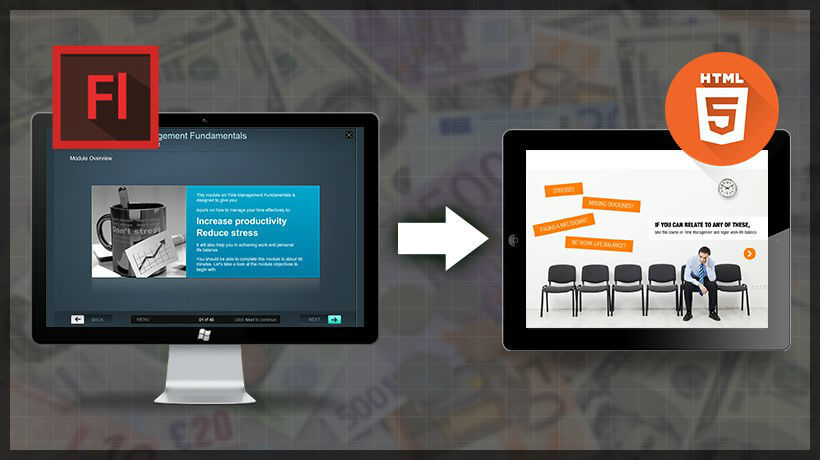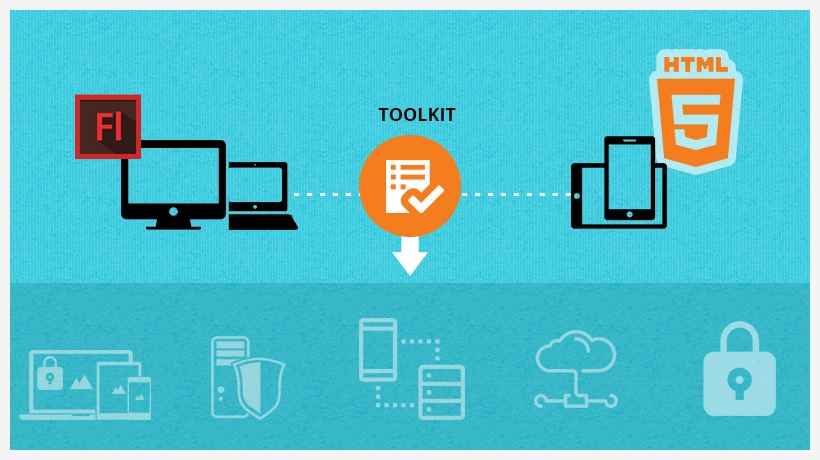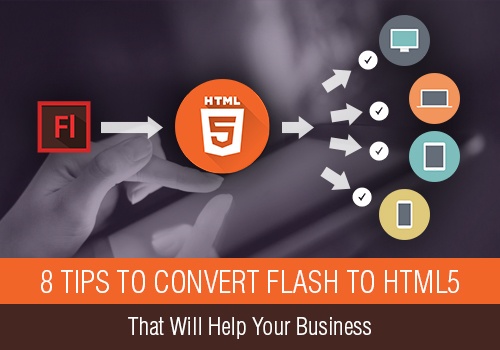Converting Legacy Compliance Courses Into Mobile Learning: 6 Formats To Use
Compliance training is often perceived as dull, dry, and monotonous by employees; added to that, if they have to sit for long hours in front of their computers to complete the course, many will simply not take it. It does not have to be this way. What if the same course was made accessible through mobile devices and converted into formats that encourage employees to finish the course? Well, this is possible, and you will be surprised with the positive results this transformation can bring.
Compliance training can be delivered successfully through mobile learning. We’ve done it for several of our clients, much to their surprise. The thorn in the side of companies when it comes to compliance training, especially legacy courses, is that they find few takers among employees. The good news is that legacy courses can be converted into mobile learning. But before that, let us look at the reasons legacy courses do not work for compliance training:
- Most (if not all) legacy compliance training programs are boring.
- They don’t make sense to most employees who, in turn, convince themselves that there is no sense in doing something that doesn’t affect their work.
- Employees find it hard to remember rules and regulations.
- Compliance training is compulsory—making it seem forced—and in the process instilling a need to rebel against it or avoid taking it up willingly.
- Learners don’t get to learn in a manner that appeals to them.
Why Does Mobile Learning Work?
Precisely for the same reasons that traditional methods of forced learning, extensive spoon-feeding, and no freedom, don’t. The advantages of converting legacy compliance courses into mobile learning include the advantages that mobile learning provides per se, and the formats that can be used within these strategies to enhance the engagement and retention of information, that is otherwise hard to comprehend, let alone remember.
When you convert legacy courses into the mobile learning format, you create a course with responsive design that can be accessed on various mobile devices. Bite-sized modules can be created, which can be personalized to provide relevant information to different groups of learners.
What Are The Formats Legacy Compliance Courses Can Be Converted Into?
Unlike legacy courses, that use formats such as PowerPoint presentations delivered as click-next eLearning, the formats used with mobile learning make information far less cumbersome to absorb, and far more engaging.
1. Microlearning
They are short (can be as short as two minutes), and easy-to-understand bits of information. One learning point/learning objective per module, so that learners don’t feel inundated by the course, even before they start. Microlearning can be created quickly for reinforcement of information, through quick assessments, a video, or even a short voice recording.
2. Video
Moving images in videos are impactful and engaging—leading to better understanding and longer retention of information. Video can be part of a full-fledged mobile learning course, or it can be provided as a stand-alone refresher course for reinforcement training.
3. Infographics
They can be used as part of a mobile learning course or as a standalone microlearning nugget that emphasizes the regulations taught in an online/mobile learning course. So, information is reinforced several times over.
4. Gamification
Gamification of boring concepts increases engagement. Gamification can be used as part of a full-fledged mobile learning course to test knowledge or even provide snippets of information on regulations, as the learner progresses through the game. As a standalone (microlearning) assessment, gamification reinforces information and lets learners know how much of the compliance course they remember.
5. Case Studies
These can be used in mobile learning to provide information on the consequences of non-compliance.
6. Storytelling
Almost as old as time itself, this format is as effective today. Stories make information relatable, engaging, and leave a lasting impression.
This is not an exhaustive list. For more information on how to implement mobile learning in an organization, access this webinar.
What are the rules you must follow when converting legacy compliance courses into the mobile learning format, so that you get maximum benefits from the conversion? Here are a few:
- Choose a format wisely, and based on the content.
- Choose a format(s) that succeeds in capturing learners’ attention.
- Exhaust all your raw compliance data. No matter what format they are in, they can be converted into online formats that work.
- Remember not all formats are suitable for all types of information.
Converting legacy compliance courses into mobile learning may just be the solution, because it is an interesting way to engage learners. This view reiterates something former US Deputy Attorney General, Paul McNulty once said: "If you think compliance is expensive, try non-compliance".








